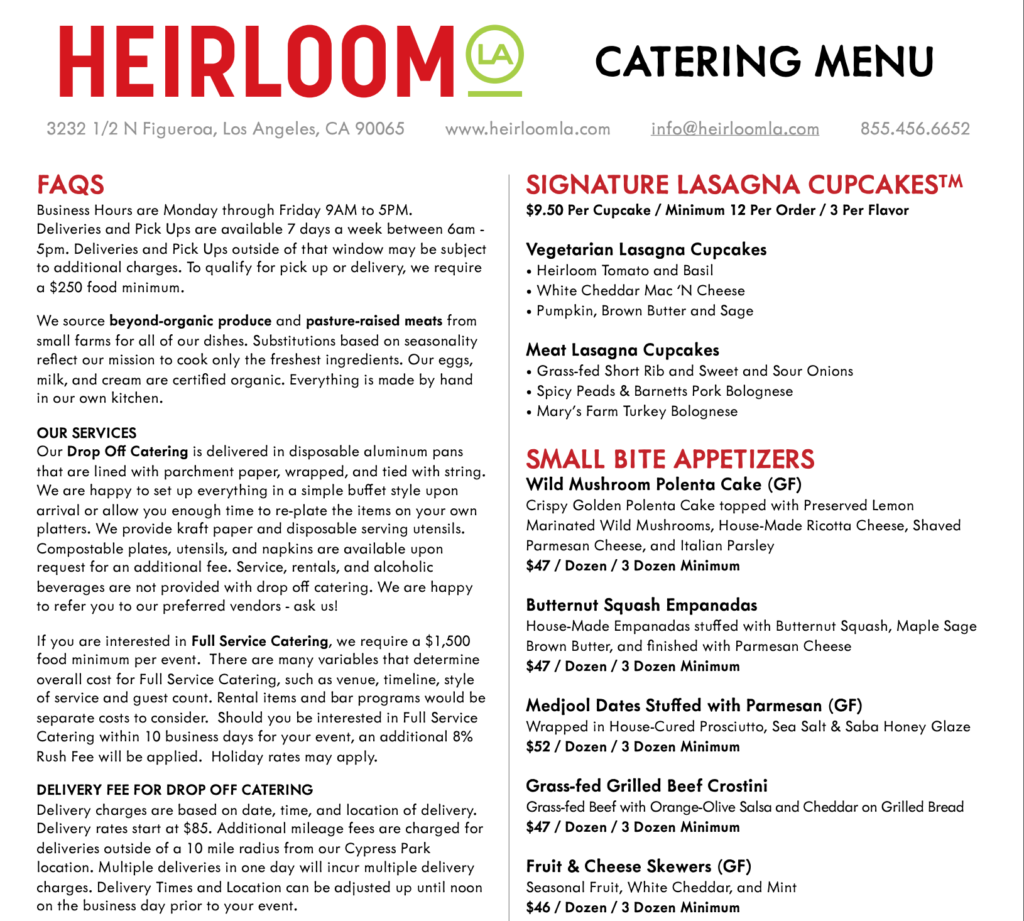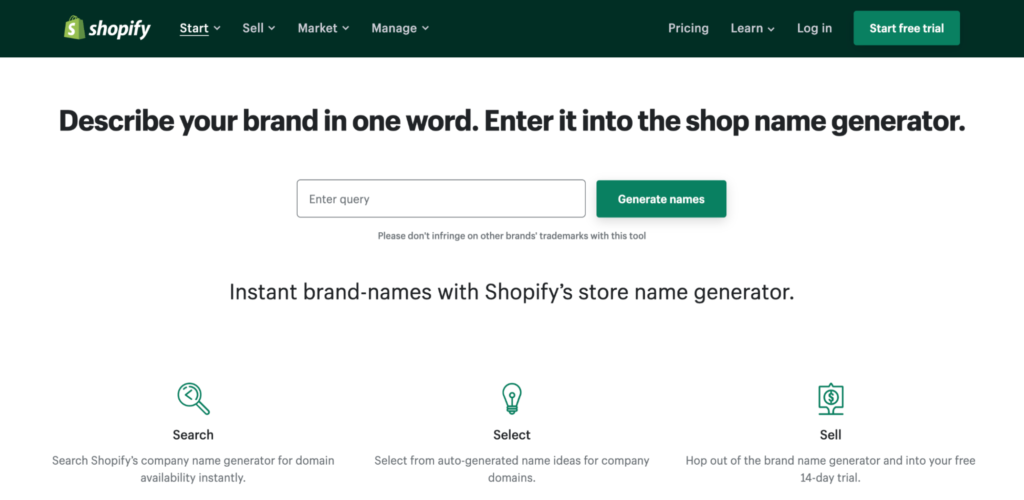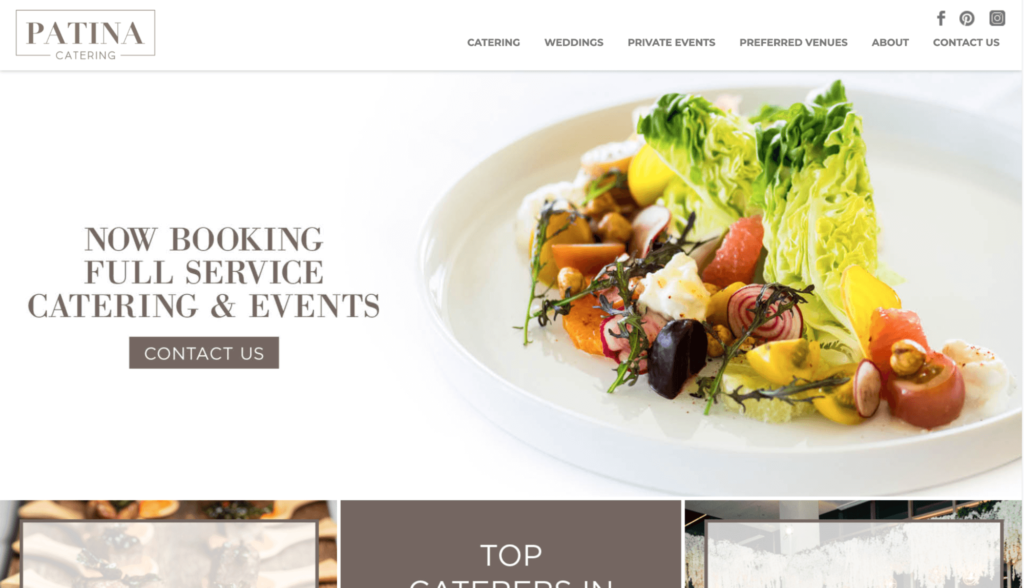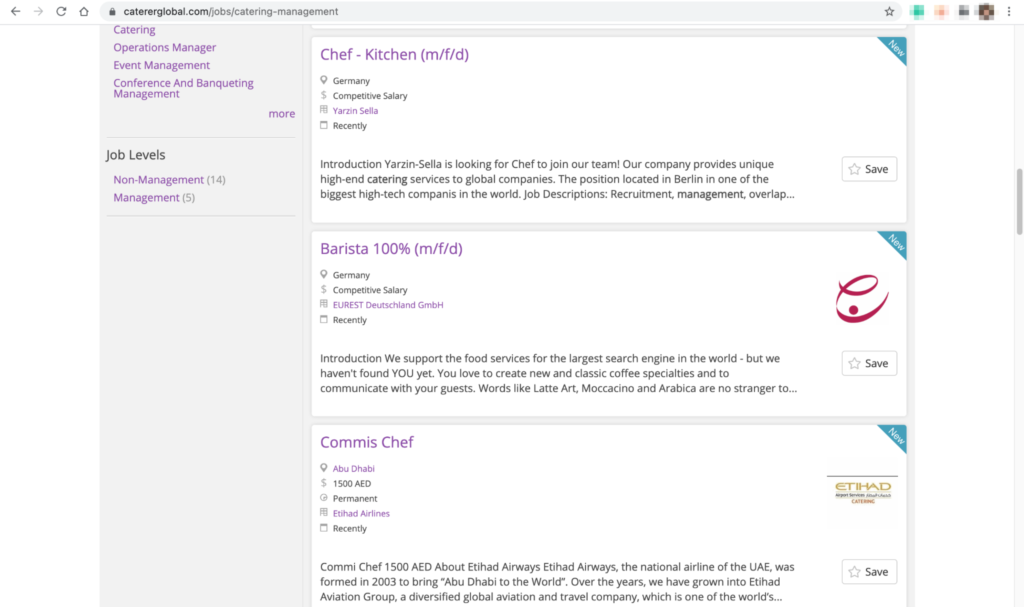The catering industry attracts all kinds of entrepreneurs—people who love to cook, like throwing parties, are experienced event planners, or simply find it potentially lucrative.
However, a catering business is still a tricky venture to run.
There’s so much more you need to take care of than putting food on plates. You have to plan events, prepare for the unexpected, raise funds…the list is endless.
In this article, I’ll discuss everything it takes to start and fund your own catering business and secure yourself on the fast track to success.
The Easy Parts of Starting a Catering Business
Starting a catering business is an excellent solution for an entrepreneur who loves food and understands food trends. You get to do what you love and earn money while you do it.
The flexibility and scalability of the business are other benefits. You don’t have to restrict yourself to a 9-to-5 job, and can choose your customers, decide what to serve, and how many appointments you take.
Another advantage of the catering industry is its diversity. As there are so many different kinds of events, ranging from birthday parties to weddings to corporate events to at-home soirees, you don’t have to cater for events you aren’t comfortable catering.
The Difficult Parts of Starting a Catering Business
Managing and satisfying customers are hands down the most challenging aspect of owning a catering business.
You’ll find yourself dealing with demanding clients who may make unreasonable demands. Then there’ll be clients who won’t be satisfied with your services. After all, you cannot please everyone.
While this is a part and parcel of being a business owner, an unsatisfied customer can cause serious damage in the catering industry. Bad reviews will harm your reputation and can easily degrade your business—even when you aren’t at fault.
Additionally, you have to ensure all food items are handled and processed properly. Passing frequent authority-led inspections is also critical if you want to continue operations.
The other challenge is staying committed. Once you accept a catering appointment, you cannot do a sub-par job. In fact, not showing up or messing up an event may put you into liability issues.
Step 1: Plan Your Business
You must know exactly what kind of catering business you want to open. Whether you want to offer baked goodies or full-course meals, the menu you’re going to set up, and all the other nitty-gritty details.
Creating a viable business plan is also critical. This will give you a carefully thought-out pathway to follow and make informed decisions that align with your end objectives.
Choose Your Catering Niche
If you plan on catering for every event in your area, I have some advice for you: Don’t.
You’ll stretch yourself way too thin and set yourself up for failure trying to offer everything to everyone. Instead, pick a niche and offer unique or specific services within that niche that give you an edge over your competitors.
Luckily, there are tons of catering niches you can consider, including:
- Corporate events
- Birthday parties
- Weddings
- School events
- Holiday parties
- Sports events
- Festivals, conventions, and retreats
- Children’s or family-specific events (may overlap with other niches)
A good tip when picking a catering niche is to consider the type of food you want to make.
For instance, if you prefer preparing salads and sandwiches, corporate events or school functions would be a better fit. But if you’re an expert in serving fancy entrees or cakes, you should cater for weddings and special events.
Doing thorough market research is equally important.
Are there any gaps in catering availability? Which niche is saturated with the most competition in your area? What’s your competition’s pricing structure and costs?
Doing research will help you answer all these problems, clearing your path to success. You’ll be better equipped to understand your competition, determine your target audience and unique service proposition (USP), and more importantly, start making money.
Find Out the Costs Involved
Many caterers kickstart their venture out of their home, but they quickly outgrow that space if they see any success.
In such cases, you want to purchase or rent a space in a commercial kitchen on an as-needed basis. The rent is usually paid on an hourly basis, with the initial charges averaging about $75.
Once you find your workspace, you’ll need a few additional items and equipment. Leased equipment can cost you anywhere between $100-$400 per month. Then you’ll have to pay extra for flatware, glassware, and linens.
I highly recommend renting from a local company. Not only do such companies deliver the items safely and on time, but they also schedule pick-ups and clean them after the event. And local businesses are much more likely to (1) know your area and the local event industry as well as you, (2) offer more personalized service, and (3) potentially offer discounts to other local and/or small businesses like them.
Purchasing a van to transport anything for the event and catering software to help you plan, sell, book events, and market your services is also crucial. While the former can cost anywhere between $7000-$75,000, the latter will cost you about $70-$135 per month if you host the software and $1200-$3500 if you purchase the software outright.
Let’s not forget you’ll also need to pay for a website, developing marketing material, and insurance.
Set Your Prices
How you price your services depends on where your business is located and the catering you do.
Most catering businesses offer tiered pricing that provides a specific level of service and amenities for various amounts. But you can also offer custom proposals based on your client’s requirements.
To give you an idea, the price per person can vary from $8-$10 for light appetizers to $80+ for fancier meals featuring multiple courses and/or fancier entrees like seafood and steak.
Create a Business Plan
A business plan outlines how to hit future targets. Think of it as a blueprint that will show you how your company will become successful and profitable.
Every enterprise needs their own business plan since they have their own goals, challenges, and functioning style. Despite this, there are a few common sections you’ll find in all business plans, such as:
- Executive Summary: Describes the content of the business plan.
- Overview: Covers the business background, its legal structure, and other crucial details.
- Industry Analysis: Gives an overview of the industry, such as its size, nature, and any current trends.
- Competitive Analysis: Reviews your competition.
- Marketing: Contains your marketing strategies and how you plan on reaching out to customers.
- Operations Plan: Describes the operations of your business.
- Management: Covers the values and skills of your management team.
- Financials: Overviews current and future revenues.
Banks, angel investors, and non-profit leaders often require a business plan before extending funds. So having a business can also help raise sufficient funds to maintain a positive cash flow.
Step 2: Sort Out Your Space and Supplies
You must proceed carefully in this step since you want the best possible deals and quality without going over your budget. It’s tricky but not impossible. All you need is the right guidance, patience, and some solid negotiation skills.
Create Your Menu

Since you already have a niche in mind, narrowing down your menu choices won’t be too difficult.
Think about your target demographics. Include food items you specialize in. Consider the variety you want to offer.
You don’t want a menu with too many food items or items made with ingredients that aren’t easily available. Not only will this cause unnecessary stress for you, but it may also disappoint clients when you fail to deliver.
Your menu should also have vegetarian, vegan, dairy-free, and gluten-free options to support customers with dietary restrictions.
I recommend testing out your menu on a few friends and family members to get their feedback. Encourage honesty about what works and what doesn’t, and alter the menu accordingly.
Find Reliable Suppliers
Creating a menu will give you a better idea about the ingredients you need to cook, after which you can focus on figuring out how to source fresh and quality ingredients.
During the initial stages of your business, you can make do by purchasing ingredients from a wholesale club in your area. But as your business grows, you’ll need more ingredients to cater to the growing number of events.
Reach out to restaurant suppliers, local farmers, food service vendors—or any other source that offers bulk ingredient purchase at reduced prices.
Find a Space to Rent
Depending on where you live, you may be unable to use a residential kitchen to prepare food for your catering business.
If you plan to work from home, you’ll have to contact the health department in your area to find out the regulations concerning a home-based catering business, including permit requirements and inspection.
If you decide to rent space for your kitchen, you have two ways to go about it.
- You can rent a commercial kitchen to work out of full-time. This is the more expensive option, but necessary (at least eventually) if you plan on catering as your main job.
- You can rent a place on an hourly basis if you plan to cater occasionally or on weekends. This is more affordable as you don’t have to buy equipment or worry about paying a fixed rent.
Step 3: Register Your Catering Business
This is where you lay the foundation of your very own catering business, making it a legal entity.
You have to choose a business structure, open up a business bank account, secure necessary permits and licenses, and get business insurance. Each of these processes is important for legal reasons and involves paperwork—lots of it. So be prepared for it.
You can also consider hiring business formation services or an attorney to get correct legal advice and avoid paying hefty fines or penalties.
Choose a Business Structure
Your choice of business structure affects how you’re taxed and whether you’ll be personally liable if the business is ever sued by third parties.
But before that, you need to think of a business name.
Try to brainstorm catchy business names that reflect your brand. Use business name generator tools if you want some inspiration.

Once you zero on potential names, go to your Secretary of State’s website to ensure they aren’t already being used by another business.
Got a business name? Great. You need to decide on a business structure next.
Broadly speaking, you have three options:
- Sole Proprietorship: This business structure is easy to create—all you need is a business name and Social Security number. Your business expenses get deducted through your personal tax return.
- Limited Liability Company (LLC): You can start an LLC yourself by paying the minimal state LLC costs or hire an LLC service for a small additional fee. The best part about this business structure is you cannot be held personally liable for your business’s debts.
- Corporation: Similar to an LLC, a corporation offers additional tax advantages—provided you’re ready to handle the extra paperwork. Again, all your personal assets are protected if the business is ever sued.
Other than the above, you can consider a general partnership, limited partnership, limited liability partnership, and limited liability company structures. Consult with an attorney or an accountant to learn more about your options and determine the best fit for you.
After selecting a business structure, you have to register the catering business with the state where you operate. Visit your state’s Secretary of State website and pay the required fees. If you want to operate in multiple cities, you’ll need to register with every state.
Lastly, file the necessary paperwork to get an employer identification number (EIN) from the IRS to be eligible to hire employees now or in the future.
Procure Applicable Permits and Licenses
Applying for permits is necessary to operate your business legally. Do this early in the game, as it may take weeks or even months to receive the required permits.
Moreover, state and local laws around the permit and license requirements vary, so you’ll have to do some research to learn which permits apply to your business. Here are some of the permits and licenses one typically needs when running a catering business:
- Business licenses
- Food handling licenses
- Health permits
- Liquor licenses
To learn more about the licenses required and the application process and fees, contact the local health department, the state Alcoholic Beverage Control board, and other state and legal local agencies.
Note: You’ll find yourself being subjected to regular inspections from the local health department, involving waste disposal, the temperature of prepared and stored food, cooking equipment safety and condition, and so on. No need to get intimidated, though! This isn’t unconventional for businesses in the catering industry.
Open a Business Bank Account
Ever heard of the term “piercing your corporate veil?”
It’s a business law term used for situations where your personal assets are at risk when your business gets sued because you didn’t maintain a separate personal and business account.
This is why you must have a dedicated business banking and credit account.
In addition to ensuring personal asset protection, opening a bank account will make accounting and tax filing easier. Getting a business card will also help you separate personal and business expenses by putting your business expenses in one place while simultaneously building your company’s credit history.
Get Business Insurance
Getting business insurance is a sure-shot way of protecting your catering business. What’s more, you have multiple insurance options to consider as a caterer, such as:
- General liability insurance
- Property insurance
- Errors and omission (E&O) insurance
- Liquor liability insurance
- Worker’s compensation insurance
Keep in mind that insurance requirements vary from state. Talk to your local insurance agent to find out about state laws and create a personalized life insurance policy for your catering business.
Step 4: Get the Necessary Funds, Equipment, and Tools
You need money to run a business and the right set of tools/equipment to ensure it runs smoothly. For a catering business, equipment gets priority over software, but the latter can be useful to enhance efficiency and eliminate errors.
Apply for Business Funding
We’ve covered the costs you’ll encounter when opening your catering company. Now, it’s time to figure out how to pay for them.
While approaching a bank is the traditional option, there are a few other financing options available you can consider:
- Use your personal savings
- Ask your friends or family for help
- Use a business or personal credit card
- Get equipment or vendor financing
- Sign up for a crowdfunding site to get community assistance
- Apply for a personal loan that can be used for start-up business purposes
- Get a small business loan or line of credit
Get the Right Equipment and Tools
Procuring and handling all the equipment involved in running a catering business can get overwhelming.
You’ll need utensils, silverware, bowls, plates, and cups. This is in addition to your warming trays, sternos, and big and small pots. Then you’ll need a storage account to store all your catering equipment and save your home from turning into a warehouse.
Your best bet is to weigh up costs when it comes to renting and buying your equipment. Sites like Amazon and eBay can be excellent options to buy small items in bulk.
There’s no right or wrong answer here. Just focus on making the best choice for yourself and your business.
You should consider investing in certain tools to run operations efficiently. Besides the obvious catering software to manage all aspects of your business, you can consider implementing accounting software and payment processing software to keep track of expenses and handle payments.
Step 5: Define and Advertise Your Brand
Your brand is what your company represents and how the public perceives you. Naturally, having a strong brand will help your brand-new catering business stand out from the competition.
Create a Website

You probably knew this was coming.
Creating a website is an essential step, regardless of the industry and size of your business. So it’s no surprise you need one for your catering business too.
Building a website doesn’t have to be overly complicated. You can use a website builder that lets you choose a template, customize your fonts and colors, add images and texts, and launch a website within minutes—no web designing experience required.
Create Social Media Profiles
Social media is awesome. You can reach out to potential customers, maintain long-lasting relationships with existing customers, AND establish a strong web presence without spending a single dollar.
I highly recommend creating business pages on Facebook, Twitter, Instagram, and Pinterest. Add your contact information, service areas, and the types of events you cater for, along with pictures of past events and your food on these platforms. You can also build a profile to include other critical details like menus, pricing lists, and testimonials.
Network and Market During Your Own Events
In the catering niche, the best time to find a client is when you’re already in charge of an event.
Provide excellent service and food, and you’ll have people singing your praises and wanting to hire you for their events. But that isn’t the only way.
You can advertise on LinkedIn if you do corporate catering. Paying people to knock on doors and pass out flyers during corporate events may also work. Similarly, attending bridal shows, where you bring your food samples or purchase a booth, would be a good business investment if you cater for weddings.
Step 6: Hire Your Team
Unless you plan on doing super small events or have superhuman powers, you cannot cater all by yourself. So hiring and training staff is a requirement.
While hiring a chef and servers is a no-brainer, you can get bartenders, busboys, host/hostess, event planners, and supervisors on board too.
You have to be very, very vigilant when hiring, though. After all, your catering business is only as good as your menu and the people who work for you.

Post job advertisements on popular food services-specific job marketplaces. Find out how your company competitors hire their staff or ask people on your network to recommend reliable people.
Local temporary agencies can also be helpful.
This is all you need to get the ball rolling and launch a catering business. Just focus on careful planning, preparation, and strategic borrowing, and you’ll soon be an owner of a successful venture.
from Quick Sprout https://ift.tt/3y0oI7j
via IFTTT
